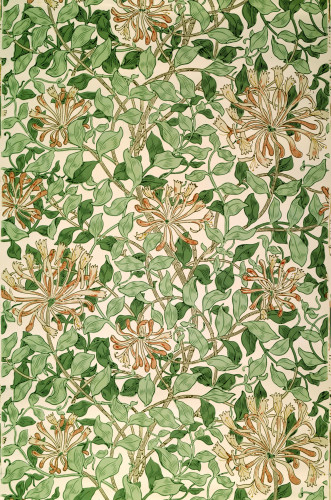During her first three years working for Morris & Co, May Morris designed three wallpapers. ‘Honeysuckle’ was her most popular and enduring pattern and its light and uplifting design proved very successful for the firm. The design is based on a net structure of untamed woody stems, small curling leaves in two tones and honeysuckle flowers set against a plain background and was printed in four colourways. The repeat is 54cm.
Until recently questions surround who originally designed ‘Honeysuckle’, with some arguing that May’s father, William Morris was in fact the chief designer of the wallpaper. This is based on its earliest known attribution from 1890 by the writer of an article in The Woman’s World where it was credited to William Morris. However it was not unusual at this time for the designs of both May and Henry Dearle, Morris & Co.’s chief designer, to be credited to the firm’s more famous owner: the association tended to make the products more commercially viable. The first time the design is attributed to May appeared twenty years after The Womans World article in the Morris & Co. wallpaper catalogue from about 1909 and is confirmed in a letter by May.

